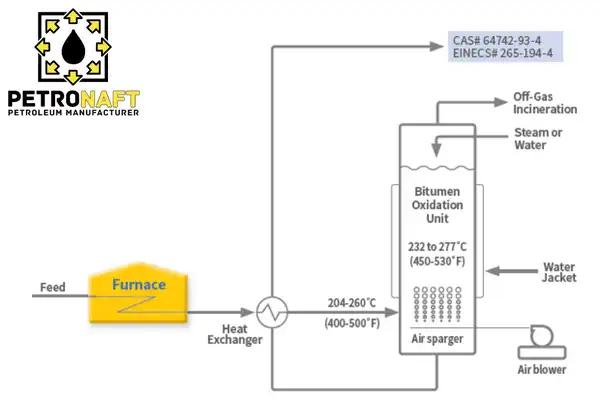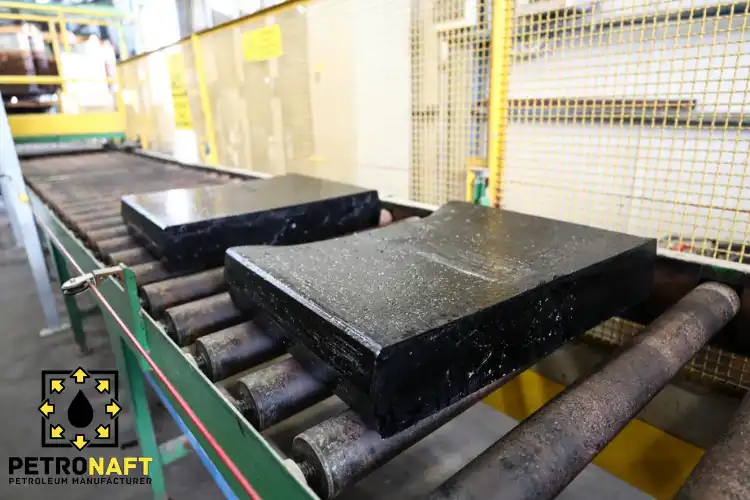Unlocking the Potential of Oxidized Bitumen Production
In the realm of petroleum refining and construction materials, oxidized bitumen stands out for its unique properties and extensive applications. Oxidized Bitumen production is a specialized process that transforms the heavy fraction of petroleum crude oil, known as bitumen, into a more rigid and adhesive material suitable for a range of industries. The target of this article is to delve into the details of this production process, its importance, and the applications it serves in modern industries.
Oxidized bitumen production is a meticulous process that transforms standard bitumen into a material with superior properties, making it a preferred choice for various industrial applications. The journey begins with the preparation of raw bitumen, which is heated to a specific temperature to reduce its viscosity and make it more amenable to the air blowing process. Following this, air is injected into the heated bitumen under controlled conditions, initiating a series of complex chemical reactions. This controlled oxidation process results in an increase in the bitumen’s molecular weight and a change in its chemical composition, ultimately enhancing its thermal stability, flexibility, and resistance to UV rays. The process also imparts improved adhesive qualities to the bitumen, ensuring a stronger and more durable bond when applied to surfaces.
Mastering the Art of Oxidized Bitumen Production for Superior Performance
The production of oxidized bitumen requires precision and expertise, as the conditions under which the air blowing process occurs are critical to achieving the desired end product. Temperature control is paramount, as excessive heat can lead to undesirable changes in the bitumen’s properties, while insufficient heat may result in an incomplete oxidation process. Similarly, the rate of air flow and the duration of the process must be meticulously managed to ensure uniformity in the product’s quality. By mastering these variables, manufacturers are able to produce oxidized bitumen that meets stringent industry standards, ensuring its reliability and effectiveness in applications ranging from roofing and waterproofing to road construction. The final product exhibits enhanced durability, resistance to deformation, and an ability to withstand extreme weather conditions, making it a vital material in the construction and maintenance of robust and long-lasting structures.
BBUs, ABUs, and oxidizers produce oxidized bitumen, commonly known as blown asphalt.
In the oxidized bitumen production, to modify the physical qualities of the products, air at a rate of 85-140 cubic meters per minute is continually passed through the bitumen feed at high temperature. The primary goal is to harden the bitumen, raise the softening point, and alter the bitumen’s thermal viscosity qualities. The mechanisms for achieving these objectives include varying degrees of chemical reactions that result in a rise in the average weight of bitumen molecules, which leads to an increase in bitumen’s maximum viscosity.
Air cooling, or mild air blowing, is often used to change the physical qualities of injected feed to generate materials used in the manufacturing of roofing insulation (Bituminous Membranes) products and other industrial operations. To soften the feed in the BBU unit, fluid oils might be employed. Catalysts can also be used to speed up the reaction and enhance temperature sensitivity. Catalysts include ferric chloride, hydrochloric acid, phosphorus pentoxide, and phosphoric acid.
The BBU unit in the oxidized bitumen production comprises essentially of a reactor, air blower, gas removal or combustion equipment, and temperature control equipment. The reactor is typically a vacuum vessel, but it can also contain blades or a mechanical stirring device to guarantee full bitumen-air mixing. Because the oxidation process is often exothermic, the reactor can be outfitted with a water jacket or water spray apparatus on top to regulate the bitumen temperature. To regulate and limit the danger of fire or explosion, steam or water injection into the reactor’s top area is utilized to lower the quantity of oxygen. The graphic below depicts the schematic diagram of the oxidized bitumen unit.
Despite the complicated reaction mechanism and kinetics in the blown unit, the overall reaction pathway in the oxidized bitumen production is characterized as the transformation and conversion of cyclic structures to resins (polar aromatics), which are then condensed to create asphaltene. The principal oxidation mechanism in blown bitumen is the creation of carbon-carbon bonds by condensation oxidation and, to a lesser degree, the formation of ester groups.

The basic goal of oxidized bitumen production is to harden, raise the softening point, and modify the thermal viscosity.
Depending on the strength of the oxidation process, the chemical changes that occur cause variations in the physical qualities of the BBU unit feed. As a consequence of the interaction between the rings and the resins, an oily maltene phase forms, which covers the asphaltenes and causes the bitumen to harden, lose permeability, and soften. When the concentration of asphaltenes is increased above a specific amount, the flow characteristics of bitumen at ambient temperature shift from viscoelastic to almost pure elastic.
The temperature sensitivity of goods is determined by the degree of oxidation. The qualities of air-refined (moderate oxidation) products are comparable to those of vacuum-distilled straight-run bitumen. As a result, air-modified bitumens and vacuum distillation residuals are employed directly or in combination to generate final products. Because of the largest proportion of asphaltene, oxidised bitumens exhibit considerable variances in temperature sensitivity values and a high and significant softening point. These qualities cannot be combined by ordinary distillation or air reforming.
The rate and speed of the oxidation reaction that occurs in the oxidized bitumen production are influenced by the properties of the feed and the conditions in the blown unit, such as the viscosity or permeability of the feed, reactivity of the feed, temperature, air flow rate, degree of stimulation, pressure, air feeding ratio, and whether or not it is used. It is determined by the catalyst.
The oxidized bitumen production, the main purpose is to harden the bitumen, elevate the softening point, and change the thermal viscosity properties of the bitumen.
Innovations and Environmental Advances in Oxidized Bitumen Production (Insights Added August 2024)
In recent years, the production of oxidized bitumen has seen significant innovations, particularly in the areas of production techniques, chemical modifications, automation, and environmental sustainability. These advancements are set to revolutionize the industry, ensuring higher efficiency, improved product quality, and reduced environmental impact.
Advanced Production Techniques for Thermostable Bitumen
One of the latest developments in oxidized bitumen production is the oxidation-compounding method, which has proven highly effective in producing thermostable bitumens for road construction. This technique involves deeply oxidizing bitumen and then compounding it with pre-oxidized tar at controlled temperatures. The resulting bitumens demonstrate excellent extensibility and resistance to thermo-oxidative aging, making them ideal for constructing durable road surfaces that withstand harsh environmental conditions.
Chemical Modifications for Enhanced Performance
To further enhance the properties of oxidized bitumen, recent research has focused on chemical modification using maleic anhydride. This modification process significantly increases the softening point and adhesion of the bitumen, which is crucial for specific industrial applications. The process temperature plays a critical role in determining the final product’s stability and performance, offering manufacturers the flexibility to produce bitumen that meets the exact needs of various projects.
Automation and Process Optimization
Automation has become increasingly important in the bitumen production process, offering a way to optimize operations, reduce human error, and ensure consistent product quality. By integrating automated systems, bitumen producers can enhance efficiency, meet the growing demand for high-quality bitumen, and better manage the complexities of processing raw materials, especially as these sources become more challenging to refine.
Sustainable Practices in Bitumen Production
Environmental sustainability is a key concern in the bitumen production industry. A new method has been developed to address the utilization of hydrocarbon vapors generated during the oxidation process. This innovative approach involves reintroducing the vapors into the production process, reducing environmental impact, and improving the overall economic efficiency of the operation. This method represents a significant step forward in making bitumen production more sustainable and environmentally friendly.
These advancements in oxidized bitumen production not only enhance the quality and performance of the final product but also contribute to more sustainable and efficient manufacturing processes. By adopting these innovative practices, the industry is better equipped to meet the demands of modern construction and environmental standards.
Purchasing This Product from Petro Naft
For more detailed information and to purchase the product discussed in this article, please visit the dedicated product page below. Alternatively, use the various communication channels provided on our site to register your purchase inquiry or take advantage of our expert guidance.
Prepared by the PetroNaft Co. research team.



